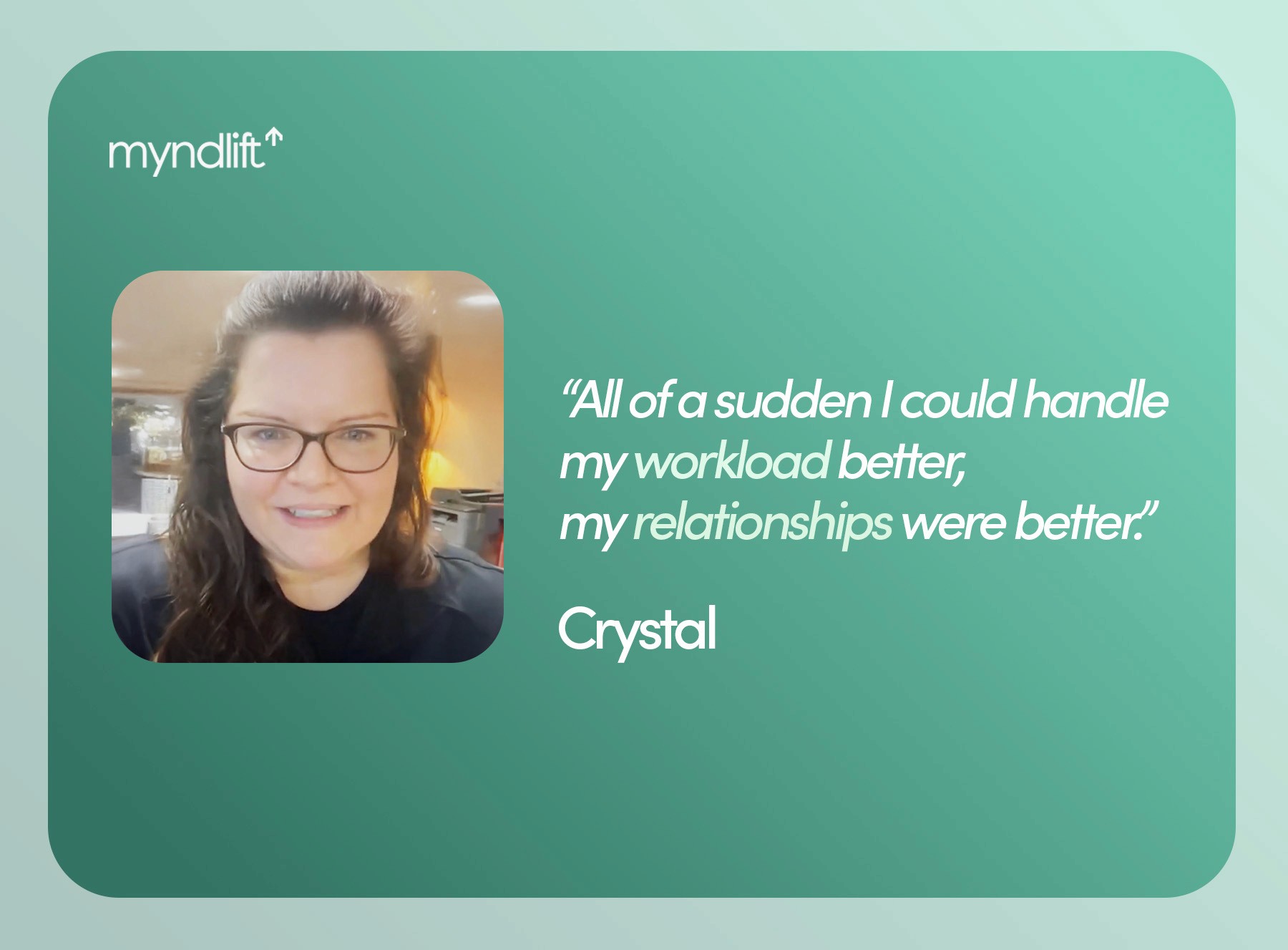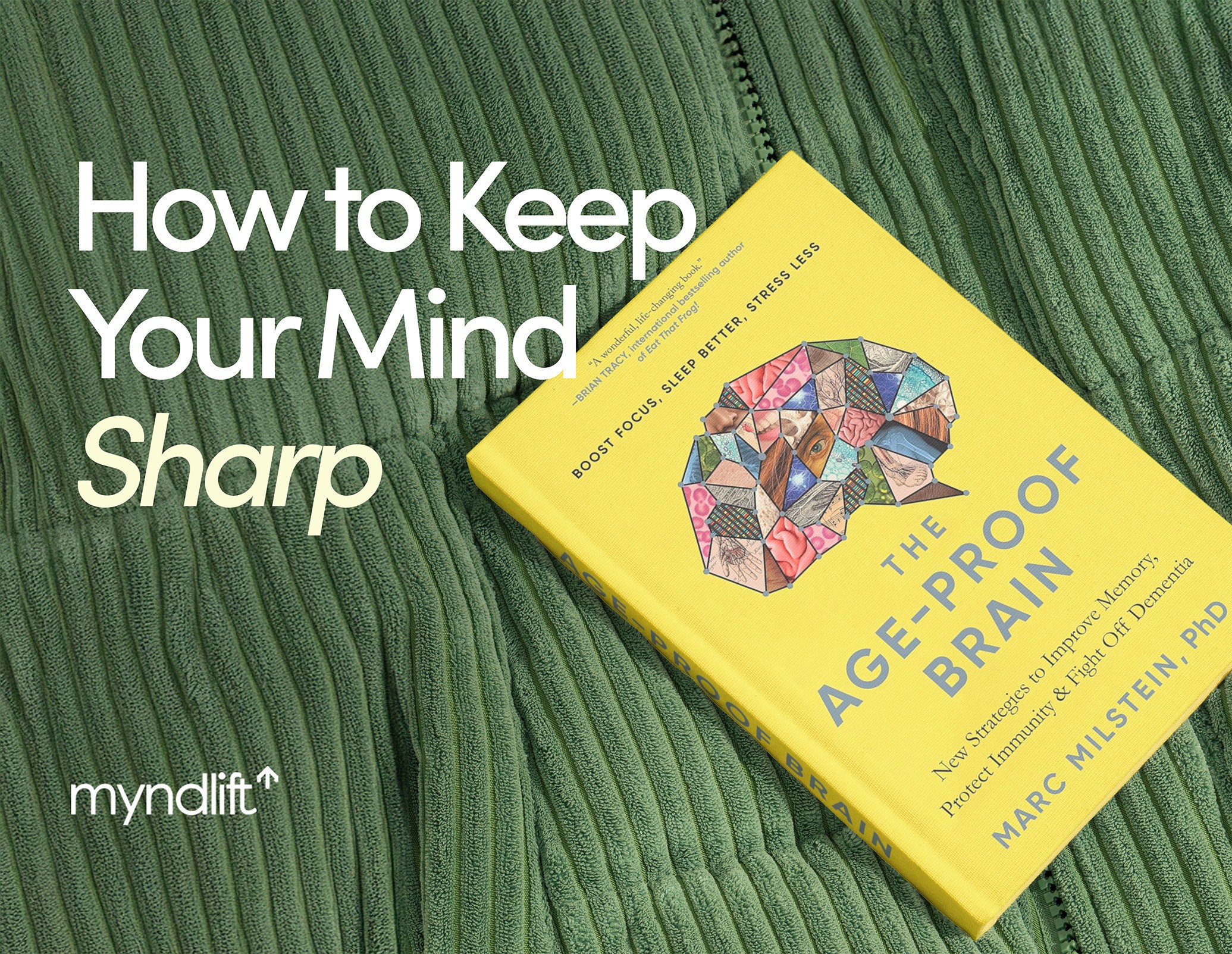Jittery hands. Beads of sweat. Rapid breathing. These are just a few signs of anxiety, as it looks different for everyone. While some people may become visibly agitated and easily irritable, you may appear calm on the surface. And when all the chronic stress reaches a tipping point, an anxiety attack may emerge – with uncontrollable shaking and rapid breathing.
Some people may even have high-functioning anxiety and, despite these symptoms, are still able to function well in areas such as work, school, personal lives, and finances. Like a duck swimming upstream, they appear to glide through the water, but are frantically paddling underneath the surface.
Anxiety has many faces and flavors. You may be wondering, how can you calm your anxiety? Are there ways to help the jitters that work in a short time? Regardless of how severe your anxiety can get, you can alleviate symptoms with these three neuroscience tricks. Let’s start with a cult favorite – controlled breathing techniques.
Neuroscience Trick 1: Controlled Breathing Techniques
What comes to mind moments before an athlete participates in a race? Or when you have to make a speech in front of your class? Deep breaths in…and out. When you feel anxious, your breathing tends to become shallow and rapid. Why is that so?
The Autonomic Nervous System (ANS) controls automatic functions, such as breathing, hearing, and blinking, and is split in two parts: the sympathetic and parasympathetic nervous systems.
You breathe faster when you’re in danger (real or imagined) because of the amygdala’s (the brain’s almond-shaped fear processor) role in the fight-or-flight response, controlled by the sympathetic nervous system. Through a cascade of processes in reaction to a perceived threat or source of danger, physical symptoms such as a faster heart rate and shallow breathing are triggered.
On the other hand, slow breathing may help activate the parasympathetic nervous system, which governs the rest-and-relax response, in turn slowing down breathing and heart rate.
Controlled breathing techniques generally follow a nose-inhale, hold, mouth-exhale (and vice versa) pattern involving the chest and belly. Experiment with different rhythms and durations and figure out what combinations best alleviate your signs of anxiety.
Try the classic 4-7-8 technique which is typically used to calm anxiety:
Inhale for 4 seconds
Hold your breath for 7 seconds
Exhale on the count of 8
Repeat a few times until you can feel yourself relax
When to make time for controlled breathing:
Right when you wake up (goodbye, morning anxiety!) and the moment you hit the pillow to start and end each day on a calm note.
On a walk or hike, note moments of irregular breathing and take deep breaths in and out to ground yourself.
During periods of a high workload, step out for 5-10 minutes to focus on your breathing patterns and soothe your anxiety.
Neuroscience Trick 2: Music Therapy and Singing
After a long day at work, why do so many people host a solo concert and let loose in the shower? Singing releases endorphins – which can increase happy feelings and calm anxious thoughts. Luckily, no perfect pitch is necessary! Music therapy is the clinical use of music through creating, improvising, recreating, or reacting to works of music by or with a therapist.
Music and music-based interventions (MBIs) have been shown to relieve anxiety relief in hospital and care settings and in daily contexts.
Research found that anxiety appears to decrease in mothers and premature infants during painful ICU procedures when they are exposed to music therapy. That’s because listening to music causes levels of oxytocin, the hormone responsible for bonding and trust, to increase. This doesn’t only apply to mothers and infants – anyone can benefit from music therapy!
Here’s how you can incorporate it into your day-to-day to relieve anxiety:
Crank up your favorite playlist and sing along to boost endorphins when you’re stuck in traffic and anxious about getting to work on time.
Hum a tune during breaks or in the elevator to beat any anxious jitters you might be experiencing – especially if you’ve had too much office coffee!
Join a local choir or ensemble during weekends to enjoy the benefits of music together to clear the stress from isolation or loneliness.
Use music to create art or write a poem. This can be a great way to express yourself and explore your emotions to combat your anxiety.
Use music to exercise. Exercise to your favorite upbeat songs to get your heart rate up and have fun. This can help to reduce stress and help you stay motivated.
Neuroscience Trick 3: Chewing (Flavored) Gum for Grounding
Got morning anxiety before a performance review at work? Instead of rehearsing what to say for the millionth time, try chewing gum before your meeting. Gum has been shown to effectively improve the brain’s attention, possibly by helping it to focus on all the flavors and textures of the minty snack – kind of like a grounding technique. Some evidence also suggests that chewing gum helps improve productivity and reduce errors at work.
In a study where 97 female patients underwent gynecologic surgery, gum helped alleviate preoperative anxiety. Their positive results were measured on the Facial Anxiety Scale (FAS), which looks at visual cues for signs of stress or relaxation.
When chewing gum for anxiety relief:
Try different flavors for different tasks (e.g. mint for work, fruit for errands) to help your brain associate taste with a type of task and keep anxious thoughts at bay while you’re completing it.
Have it after eating a heavy meal as it may help with acid reflux, which can be connected to anxiety as a troubled brain sends signals to the gut.
The Hopeful Future for Anxiety Relief
We’ve looked at three easy ways to help reduce those racing, anxious thoughts with the help of neuroscience. Deep breathing, exercising vocal cords on a karaoke night, and chewing gum are simple, yet effective things you can do to calm your nerves.
Myndlift provides professional supervised brain training that can be completed from the comfort of your home. Connect with us to launch your journey for better brain health and wellbeing from here.
About the author:

Lily Yuan
Lily Yuan is a personality psychology / health care writer and career coach who specializes in the Strong Interest Inventory and Extended DISC assessments.
About the checker:
Kaija Sander, Ph.D.
Kaija Sander is a cognitive neuroscientist and scientific consultant for Myndlift. She holds a BSc in Biomedical Science with a specialization in Neuroscience and Mental Health from Imperial College London and a PhD in Neuroscience from McGill University. Her doctoral research focused on brain connectivity relating to second language learning success. She is passionate about the broader applications of science to have a positive impact on people’s lives.
References
A. Mofredj, S. Alaya, K. Tassaioust, H. Bahloul, A. Mrabet
Music therapy, a review of the potential therapeutic benefits for the critically ill
J. Crit. Care, 35 (2016), pp. 195-199, https://doi.org/10.1016/j.jcrc.2016.05.021.
Bang, Y.J., Lee, JH., Kim, C.S. et al. Anxiolytic effects of chewing gum during preoperative fasting and patient-centered outcome in female patients undergoing elective gynecologic surgery: randomized controlled study. Sci Rep 12, 4165 (2022). https://doi.org/10.1038/s41598-022-07942-6.
Chen, Y.-F., Huang, X.-Y., Chien, C.-H. and Cheng, J.-F. (2017), The Effectiveness of Diaphragmatic Breathing Relaxation Training for Reducing Anxiety. Perspect Psychiatr Care, 53: 329-336. https://doi.org/10.1111/ppc.12184.
de la Torre-Luque, A., Díaz-Piedra, C., & Buela-Casal, G. (2017). Effects of preferred relaxing music after acute stress exposure: A randomized controlled trial. Psychology of Music, 45(6), 795–813. https://doi.org/10.1177/0305735617689953.
Dur, Ş., Çevik, S. G., & Ustabaş Yıldız, N. (2023). The effect of white noise and classical music on pain and physiologic parameters in preterm infants during retinopathy of prematurity examinations: A randomized controlled trial. Early Child Development and Care, 193(1), 60-71. https://doi.org/10.1080/03004430.2022.2051501.
Jerath, R., Crawford, M.W., Barnes, V.A. et al. Self-Regulation of Breathing as a Primary Treatment for Anxiety. Appl Psychophysiol Biofeedback 40, 107–115 (2015). https://doi.org/10.1007/s10484-015-9279-8.
Luo, J., Xia, M., & Zhang, C. (2022). The Effects of Chewing Gum on Reducing Anxiety and Stress: A Meta-Analysis of Randomized Controlled Trials. Journal of healthcare engineering, 2022, 8606693. https://doi.org/10.1155/2022/8606693.
Öznur Erbay Dallı, Yasemin Yıldırım, Fisun Şenuzun Aykar, Ferda Kahveci,
The effect of music on delirium, pain, sedation and anxiety in patients receiving mechanical ventilation in the intensive care unit, Intensive and Critical Care Nursing,
Volume 75, 2023, 103348, ISSN 0964-3397, https://doi.org/10.1016/j.iccn.2022.103348.
Sufyan Ashhad, Kaiwen Kam, Christopher A. Del Negro, Jack L. Feldman.
Breathing Rhythm and Pattern and Their Influence on Emotion
Annual Review of Neuroscience 2022 45:1, 223-247.
Telles S, Gupta RK, Gandharva K, Vishwakarma B, Kala N, Balkrishna A. Immediate Effect of a Yoga Breathing Practice on Attention and Anxiety in Pre-Teen Children. Children. 2019; 6(7):84. https://doi.org/10.3390/children6070084.
Wen Grace Chen, John Rehner Iversen, Mimi H. Kao, Psyche Loui, Aniruddh Dhiren Patel, Robert J. Zatorre, Emmeline Edwards. Music and Brain Circuitry: Strategies for Strengthening Evidence-Based Research for Music-Based Interventions. Journal of Neuroscience. 2022, 42 (45) 8498-8507. https://doi.org/10.1523/JNEUROSCI.1135-22.2022.
Zaccaro A, Piarulli A, Laurino M, Garbella E, Menicucci D, Neri B and Gemignani A (2018) How Breath-Control Can Change Your Life: A Systematic Review on Psycho-Physiological Correlates of Slow Breathing. Front. Hum. Neurosci. 12:353. doi: 10.3389/fnhum.2018.00353




